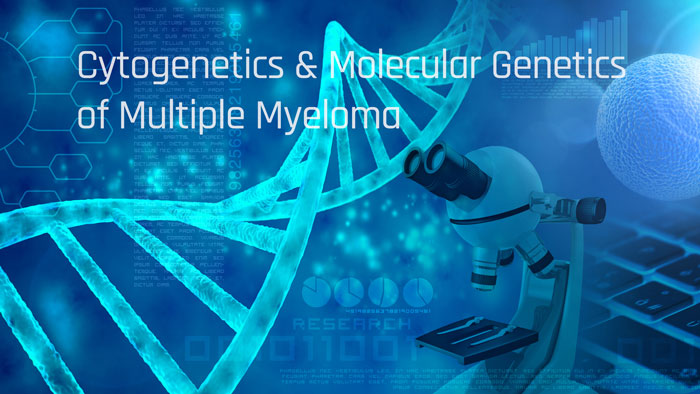Dr. Yasar Shad a Hematology/Oncology fellow from Columbia MO, asked about reading materials on the cytogenetics and molecular genetics of multiple myeloma.
We just wrote this very recent update. It includes current and future technologies. I hope this is useful.
Genomic Landscape and Mechanisms of Disease Evolution and Progression in Multiple Myeloma
Abstract
Multiple myeloma (MM) is a plasma cell malignancy, and although it is incurable in the majority of cases, survival has improved significantly with the introduction of novel agents in recent years. MM is consistently preceded by the precursor state of monoclonal gammopathy of undetermined significance, which can progress to smoldering MM, and later to MM requiring treatment. Malignant transformation of plasma cells occurs through a stepwise process involving multiple genetic hits, as well as close interaction with the bone marrow microenvironment, leading to deregulation and proliferation of plasma cells. The genomic landscape of MM is complex and involves various types of genetic aberrations and mutational processes. Early hits include immunoglobulin heavy chain translocations and hyperdiploidy, while secondary events include copy number variations and recurrent somatic mutations. With modern sequencing techniques, novel insights have been gained into the mutational landscape of MM. Studies using mainly whole-exome sequencing have identified a number of frequently mutated genes with oncogenic potential and mutations within certain signaling pathways. These studies have also revealed clonal heterogeneity, where competition among subclones contributes to tumor progression. The prognostic implication of these mutations and chromosomal aberrations is currently being redefined as more and more effective treatment regimens are used for patients with MM. In this review, we focus on the complex genetic landscape and the mechanisms of disease evolution and progression in MM.
Reference:
Genomic Landscape and Mechanisms of Disease Evolution and Progression in Multiple Myeloma AJHO. 2017;13(12):19-25
Ola Landgren, MD, PhD

